If you want to know about the laurie baker or norman foster or staircase design, please click the link.
Introduction
Neo-Futuristic Architecture is a contemporary architectural style that emphasizes futuristic, innovative, and unconventional design. It combines elements of Futurism, a cultural and artistic movement that originated in Italy in the early 20th century, with advanced technologies and sustainable design principles.
Neo-Futuristic structures often feature dynamic, organic shapes and utilize materials like glass, steel, and concrete in unconventional ways.
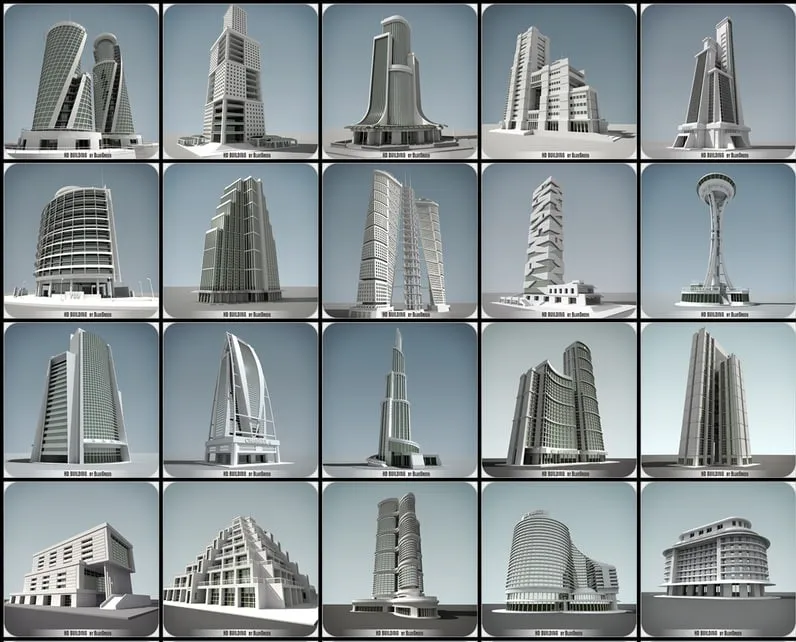
Brief history of the style
The roots of Neo-Futuristic Architecture can be traced back to the 1960s and 1970s, when architects such as Buckminster Fuller and Archigram began experimenting with new forms and materials.
The term “Neo-Futurism” was first used in the 1980s to describe the work of a group of Japanese architects, including Kisho Kurokawa, who sought to combine traditional Japanese design with modern technology.
The style gained wider recognition in the 1990s, with the completion of iconic buildings like the Guggenheim Museum Bilbao by Frank Gehry and the Selfridges department store in Birmingham by Future Systems.
Today, Neo-Futuristic Architecture is a prominent trend in contemporary architecture, with architects around the world designing buildings and structures that push the boundaries of design and technology.
Importance of the style in contemporary architecture
Neo-Futuristic Architecture is an important style in contemporary architecture because it represents a departure from traditional design conventions and a willingness to experiment with new materials and technologies.
By prioritizing sustainability and eco-friendliness, Neo-Futuristic architects are leading the way in creating structures that are both aesthetically striking and environmentally conscious.
In addition, the style’s emphasis on incorporating art and design into architectural projects has helped to blur the boundaries between architecture and other creative disciplines. This has resulted in buildings and structures that are not only functional but also visually stunning, contributing to the cultural and social fabric of the communities in which they are located.
1) Characteristics of Neo-Futuristic Architecture
Use of organic shapes and forms:
One of the defining characteristics of Neo-Futuristic Architecture is the use of organic shapes and forms in building design. Unlike the straight lines and sharp angles of traditional architecture, Neo-Futuristic structures often feature curves, spirals, and flowing lines.
These shapes are intended to evoke natural forms like waves, clouds, and mountains, and to create a sense of movement and dynamism.
Incorporation of technological advancements:
Neo-Futuristic Architecture is also characterized by its incorporation of technological advancements into building design. This can take many forms, from the use of cutting-edge materials like carbon fiber and high-strength concrete to the integration of smart technology and renewable energy systems.
By embracing new technologies, Neo-Futuristic architects are able to create structures that are more efficient, sustainable, and responsive to the needs of their occupants.
Emphasis on sustainability and eco-friendliness:
Sustainability and eco-friendliness are key priorities in Neo-Futuristic Architecture. Many Neo-Futuristic structures feature green roofs, rainwater harvesting systems, and other environmentally friendly design elements.
The use of sustainable materials and construction methods is also emphasized, as is the reduction of energy consumption and waste production. By prioritizing sustainability, Neo-Futuristic architects are helping to create a more environmentally responsible and sustainable built environment.
Integration of art and design:
Finally, Neo-Futuristic Architecture emphasizes the integration of art and design into building projects. This can take many forms, from the use of public art installations to the incorporation of design elements that reflect the cultural and social context of the building’s location.
By integrating art and design into building projects, Neo-Futuristic architects are able to create structures that are not only functional but also visually striking and culturally significant.
2) Examples of Neo-Futuristic Architecture
There are many notable buildings and structures that have been designed in the Neo-Futuristic style. Here are a few examples:
- Guggenheim Museum Bilbao – Designed by Frank Gehry, this iconic museum in Bilbao, Spain is a prime example of Neo-Futuristic Architecture. Its titanium-clad exterior features sweeping curves and organic forms that reflect the surrounding landscape, while its interior spaces are characterized by light-filled galleries and dynamic spaces.
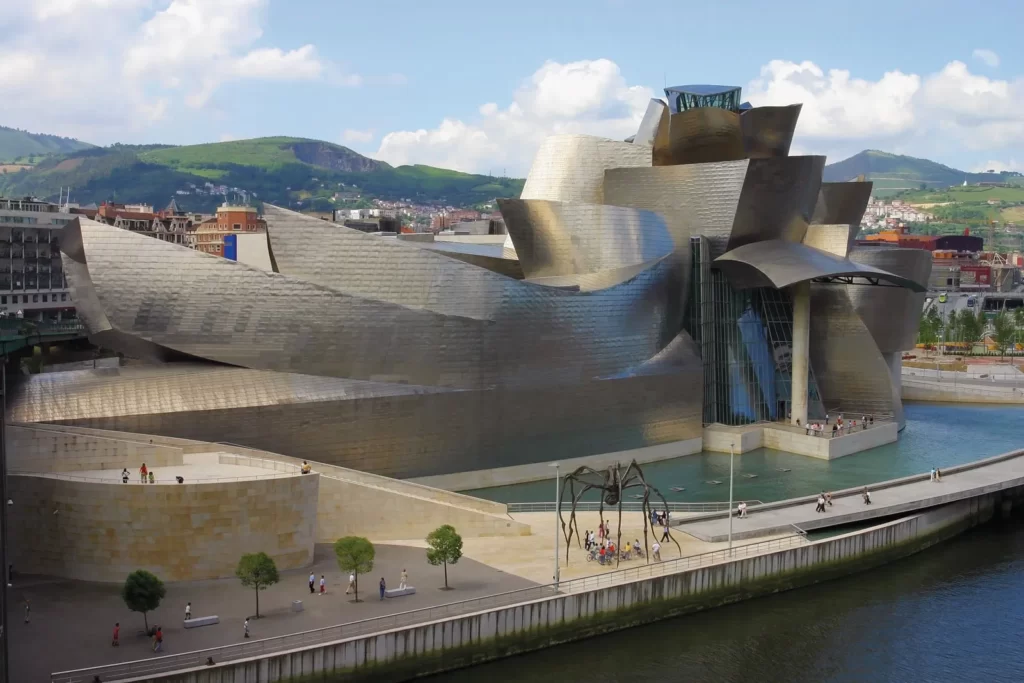
- The Eden Project – Located in Cornwall, UK, The Eden Project is a botanical garden and ecological park designed by architect Nicholas Grimshaw. Its distinctive biomes, which house thousands of plant species from around the world, are constructed from geodesic domes made of ETFE cushions and steel frames.

- The Selfridges Building – This department store in Birmingham, UK was designed by Future Systems and is recognized for its unique exterior cladding made up of 15,000 aluminum discs. Its fluid and undulating form is designed to reflect the energy of the city.
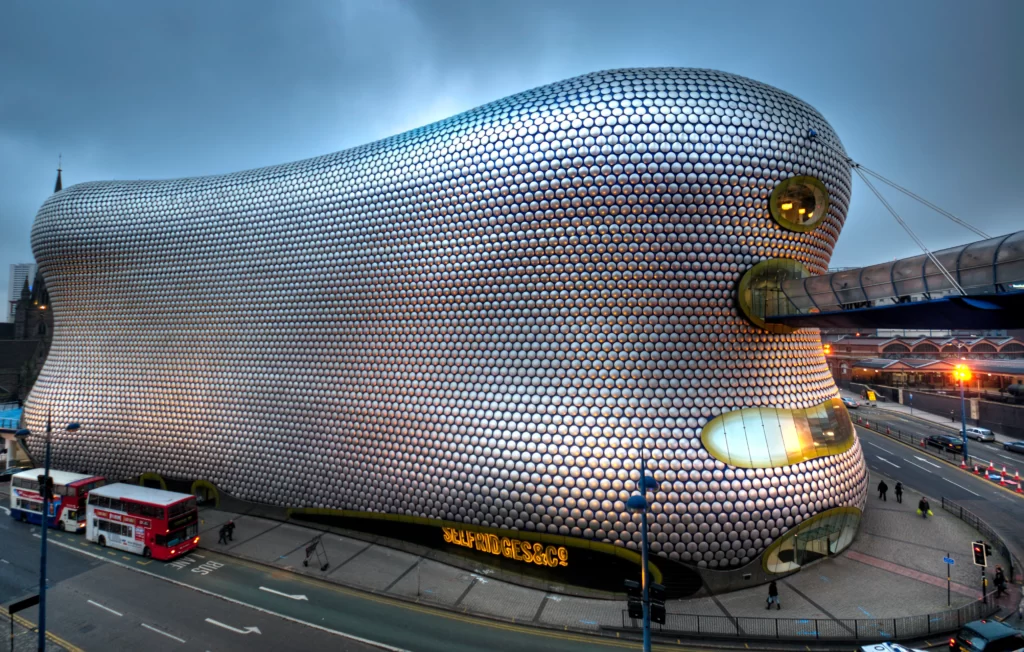
Description of their unique features and design elements
The Guggenheim Museum Bilbao is notable for its use of titanium cladding, which gives the building its distinctive shimmering appearance. The building’s organic curves and shapes reflect the surrounding landscape and the river nearby. The museum’s interior is characterized by an open floor plan with flexible exhibition spaces that allow for a variety of installations.
The Eden Project is characterized by its biomes, which are geodesic domes made of ETFE cushions and steel frames. These domes provide an immersive experience for visitors, allowing them to experience a range of climates and plant life from around the world. The project also features sustainable design elements, such as rainwater harvesting systems and renewable energy sources.
The Selfridges Building is characterized by its unique exterior cladding made up of 15,000 aluminum discs. These discs create a shimmering, iridescent effect that changes with the light and the angle of view. The building’s fluid and undulating form is designed to reflect the energy of the city, and its interior spaces are designed to be open and flexible, with minimal structural support.
3) Neo-Futuristic Architecture and Sustainability
Neo-Futuristic Architecture is inherently sustainable because it incorporates design elements that prioritize energy efficiency, waste reduction, and the use of renewable resources.
Buildings designed in this style often use cutting-edge materials and technology to minimize their environmental impact and maximize their efficiency. The use of renewable energy sources, such as solar and wind power, is also common in Neo-Futuristic buildings.
One example of an environmentally conscious design element in Neo-Futuristic Architecture is the use of green roofs. Green roofs, which are covered with vegetation, provide numerous benefits, including reducing the heat island effect, improving air quality, and reducing stormwater runoff.
One notable example of a building with a green roof is the California Academy of Sciences in San Francisco, which was designed by Renzo Piano.

Another environmentally conscious design element commonly found in Neo-Futuristic Architecture is the use of rainwater harvesting systems. These systems collect rainwater and store it for later use, reducing the need for potable water and minimizing water waste.
The Bullitt Center in Seattle, designed by Miller Hull Partnership, is one example of a building that incorporates a rainwater harvesting system.
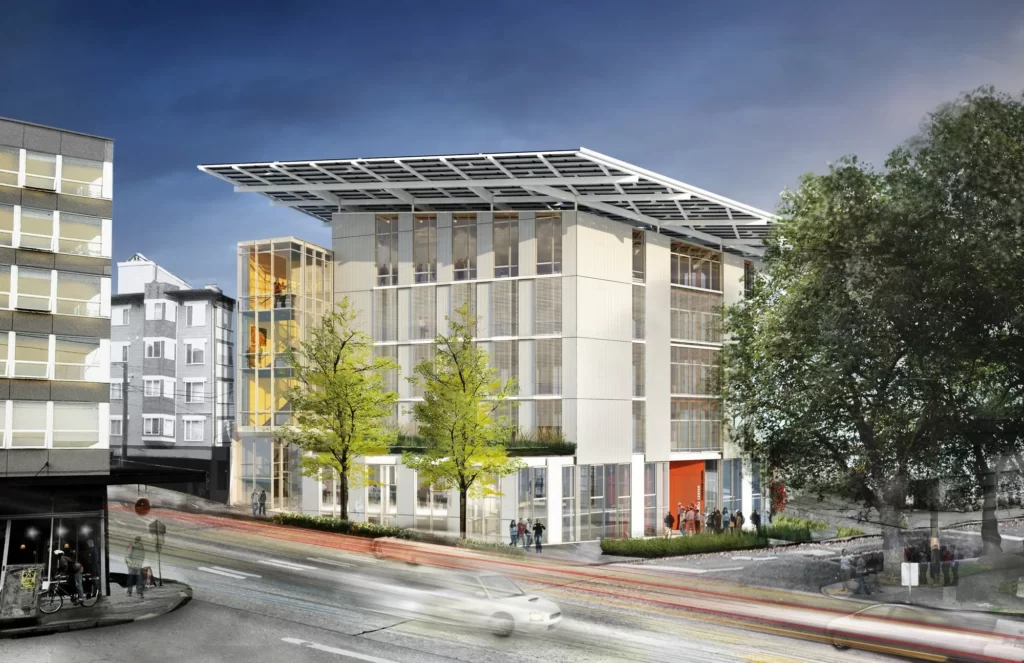
Many buildings designed in the Neo-Futuristic style also incorporate energy-efficient technologies and materials, such as LED lighting and high-efficiency HVAC systems.
The Pearl River Tower in Guangzhou, China, designed by Skidmore, Owings & Merrill, is an example of a building that uses advanced technology to minimize its energy consumption.

Finally, Neo-Futuristic Architecture often emphasizes the use of sustainable materials, such as bamboo and recycled steel. These materials are renewable, biodegradable, and have a lower environmental impact than traditional building materials.
The Singapore Pavilion at Expo 2010 in Shanghai, designed by WOHA Architects, is an example of a building that incorporates sustainable materials into its design.
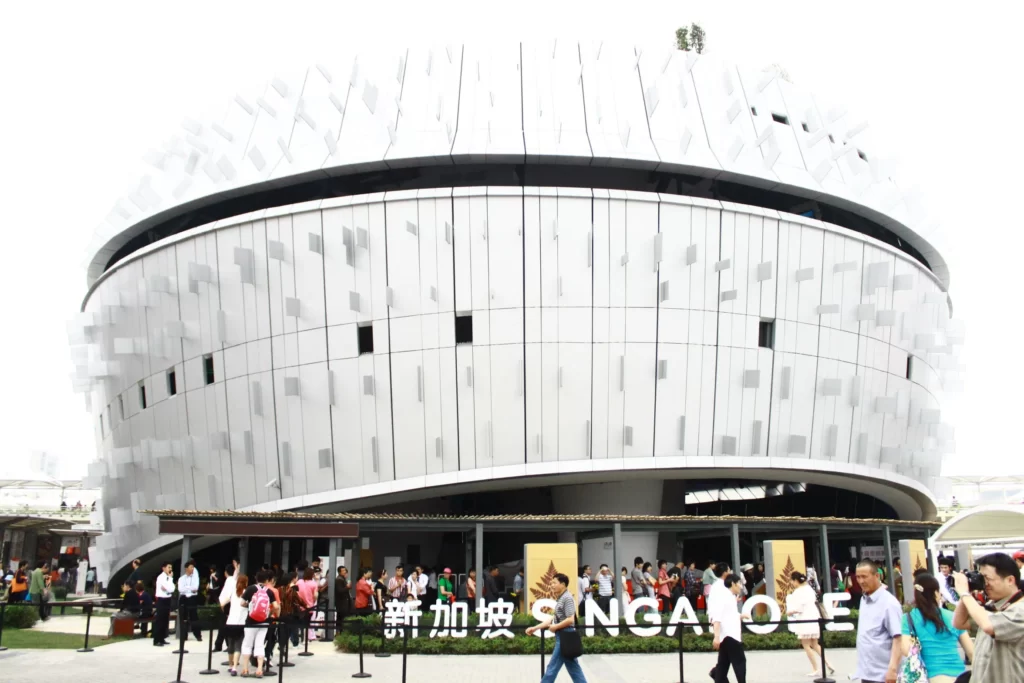
4) Neo-Futuristic Architecture and Technology
Technology plays a crucial role in Neo-Futuristic Architecture, as it enables architects and designers to create innovative forms, materials, and construction methods that were not possible in the past.
Many buildings and structures designed in this style incorporate cutting-edge technologies and materials, such as 3D printing, parametric design software, and advanced engineering techniques.
One example of how technology is incorporated in the design of Neo-Futuristic buildings is through the use of parametric design software. This software allows architects and designers to create complex, dynamic forms that respond to a range of variables, such as site conditions, environmental factors, and user needs.
The Heydar Aliyev Center in Baku, Azerbaijan, designed by Zaha Hadid Architects, is an example of a building that incorporates parametric design principles in its fluid, undulating form.
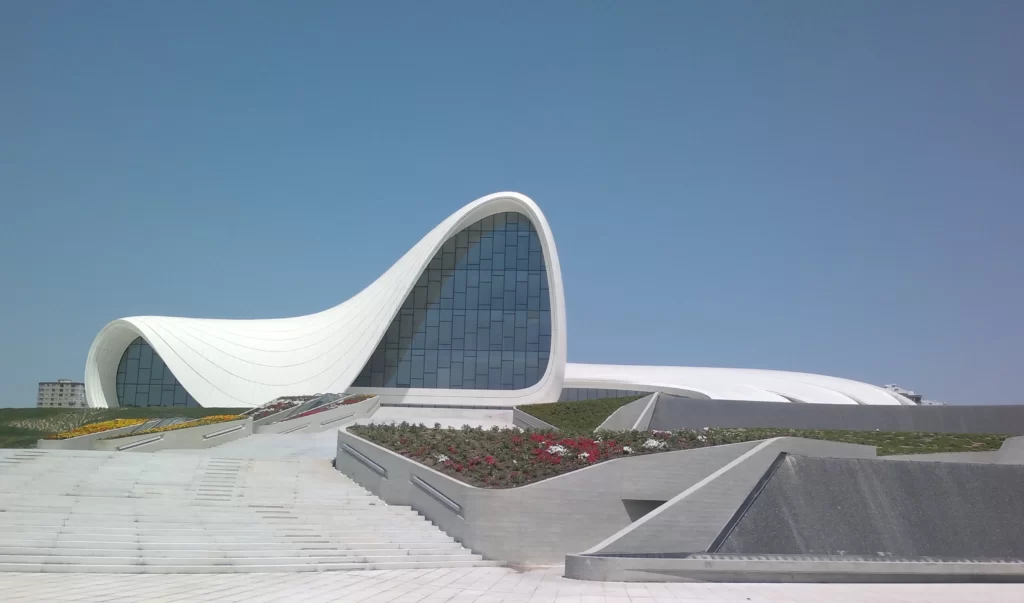
Another example of how technology is incorporated in the design of Neo-Futuristic buildings is through the use of 3D printing. 3D printing allows architects and designers to create complex and intricate forms that would be difficult or impossible to construct using traditional methods.
The DFAB House in Zurich, Switzerland, designed by Gramazio & Kohler and ETH Zurich, is an example of a building that uses 3D printing technology to create custom-designed concrete components that are both lightweight and strong.

Advanced engineering techniques also play a key role in the design of Neo-Futuristic buildings. The Shanghai Tower, designed by Gensler, is an example of a building that uses advanced engineering techniques to achieve its iconic form.
The tower’s twisted shape was designed to reduce wind resistance and minimize the building’s environmental impact. To achieve this, the building’s structural system incorporates a “megabracing” system, which consists of diagonal braces that run the length of the building and help to distribute wind loads.
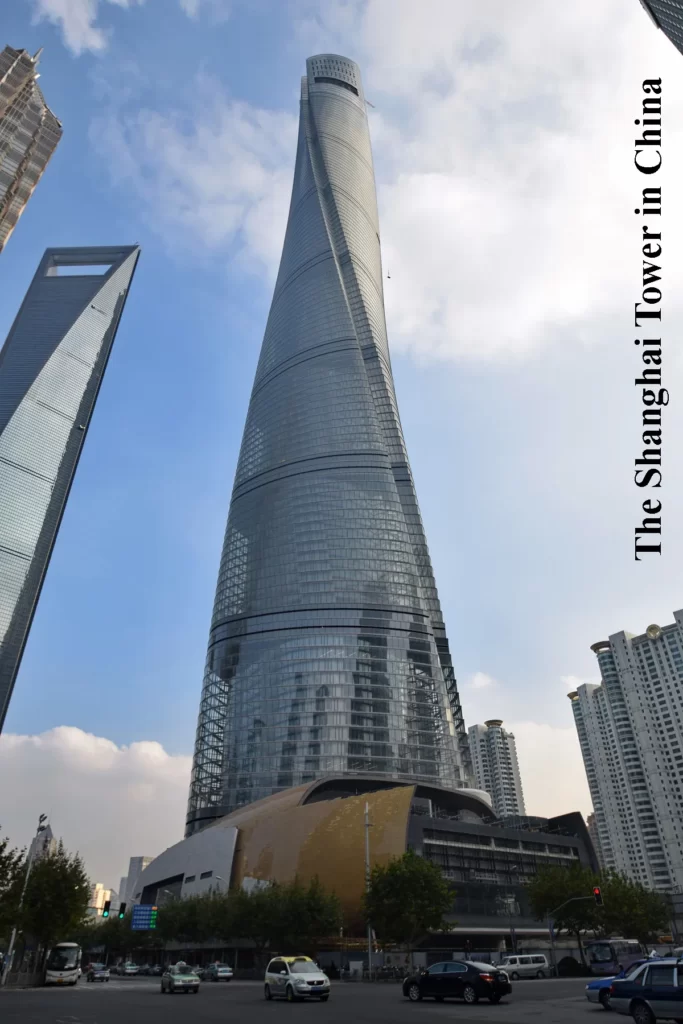
Finally, many buildings and structures designed in the Neo-Futuristic style incorporate advanced materials, such as carbon fiber and ETFE cushions. These materials offer a range of benefits, including lightweight construction, high strength-to-weight ratios, and superior thermal properties.
The Beijing National Stadium, also known as the “Bird’s Nest,” is an example of a building that incorporates advanced materials in its design. The stadium’s lattice-like steel structure is covered in a translucent membrane made of ETFE cushions, which provide natural daylighting while reducing the need for artificial lighting.
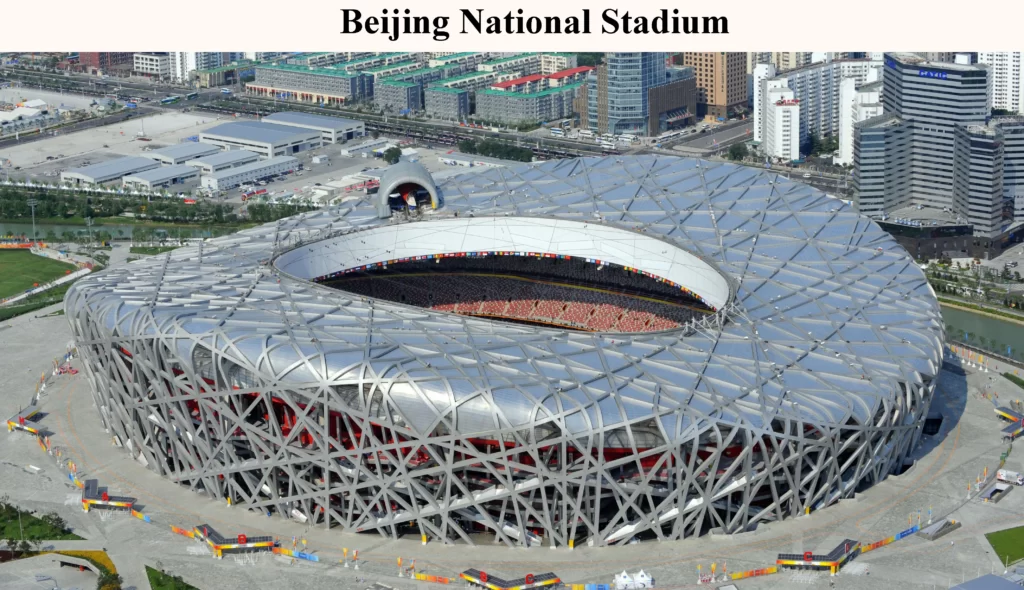
5) Criticisms and Challenges of Neo-Futuristic Architecture
While Neo-Futuristic Architecture has many advantages, it also has its share of criticisms. One of the primary criticisms of the style is its high cost and feasibility. Many of the innovative design elements and technologies used in Neo-Futuristic buildings are expensive and may not be feasible for all building projects. As a result, buildings designed in this style tend to be more expensive than those designed using traditional methods.
Another criticism of the style is that it may not always be appropriate for all building types or locations. For example, in areas with strict building codes or limited access to resources, it may be difficult to incorporate some of the more complex design elements or technologies used in Neo-Futuristic buildings. Additionally, some argue that the style’s emphasis on form over function can sometimes result in buildings that are more aesthetically pleasing than practical.
Architects who design Neo-Futuristic structures face a number of challenges. One of the primary challenges is the need to balance form and function. Because the style places a high emphasis on innovative forms and materials, architects must be careful to ensure that these elements do not compromise the building’s functionality or usability.
Another challenge architects face when designing Neo-Futuristic structures is the need to integrate cutting-edge technologies and materials into their designs. This often requires a high level of collaboration between architects, engineers, and manufacturers, as well as access to specialized resources and expertise.
Finally, architects designing Neo-Futuristic structures must also be mindful of sustainability and the environmental impact of their designs. While the style is inherently sustainable, architects must ensure that their designs are also practical and cost-effective, and that they do not compromise the building’s environmental performance. Achieving a balance between innovation, sustainability, and feasibility is one of the key challenges facing architects designing Neo-Futuristic structures.
6) Future of Neo-Futuristic Architecture
Like all architectural styles, Neo-Futuristic Architecture is likely to evolve and change over time. One potential direction for the style is a continued emphasis on sustainability and eco-friendliness.
As climate change continues to be a pressing concern, architects may increasingly incorporate renewable energy systems, green roofs, and other sustainable design elements into their Neo-Futuristic buildings.
Another potential direction for the style is a greater focus on adaptability and flexibility. As technology and user needs continue to evolve, buildings will need to be able to adapt to changing conditions and uses. Architects may incorporate modular design elements, flexible floor plans, and other features that allow buildings to be easily modified and adapted over time.
Neo-Futuristic Architecture has the potential to significantly impact urban planning and design. The style’s emphasis on innovative forms and materials, as well as sustainability and technology, can help to create more livable and sustainable urban environments.
For example, Neo-Futuristic buildings can incorporate green roofs, rainwater harvesting systems, and other sustainable design elements that reduce their environmental impact and improve the quality of life for urban residents. Additionally, the style’s focus on adaptability and flexibility can help to create buildings and neighborhoods that are more resilient in the face of changing environmental conditions and user needs.
Furthermore, Neo-Futuristic buildings can serve as landmarks and icons that help to define the character of a city or neighborhood. By creating buildings that are visually striking and unique, architects can help to create a sense of identity and place that contributes to the overall vibrancy and vitality of an urban area.
Overall, Neo-Futuristic Architecture has the potential to be a powerful force for positive change in urban planning and design, as it offers new possibilities for sustainability, technology, and innovation.
7) Conclusion
- Neo-Futuristic Architecture is a contemporary architectural style that emphasizes innovative forms, cutting-edge technologies, sustainability, and the integration of art and design.
- Notable features of Neo-Futuristic Architecture include the use of organic shapes and forms, incorporation of technological advancements, emphasis on sustainability and eco-friendliness, and integration of art and design.
- Neo-Futuristic Architecture is inherently sustainable and incorporates environmentally conscious design elements such as green roofs, rainwater harvesting systems, and renewable energy systems.
- Architects who design Neo-Futuristic structures face challenges such as balancing form and function, integrating cutting-edge technologies, and ensuring sustainability and feasibility.
- Neo-Futuristic Architecture is likely to evolve and change in the future, with a continued emphasis on sustainability and eco-friendliness, as well as adaptability and flexibility.
- Neo-Futuristic Architecture has the potential to impact urban planning and design by creating more livable and sustainable environments, serving as landmarks and icons that define the character of a city or neighborhood, and offering new possibilities for sustainability, technology, and innovation.
Neo-Futuristic Architecture is a significant and impactful style in contemporary architecture and design. Its emphasis on innovation, sustainability, and technology offers new possibilities for creating buildings and environments that are more livable, sustainable, and resilient.
The style’s incorporation of art and design also creates buildings that are visually striking and unique, contributing to the overall vibrancy and vitality of urban areas.
As the world faces pressing challenges such as climate change and rapid urbanization, Neo-Futuristic Architecture offers a path forward that is both innovative and sustainable, making it a valuable and important style in contemporary architecture and design.
I’m absolutely fascinated by the concept of neo-futuristic architecture! The blend of innovative technology with eco-friendly design principles really paints a hopeful picture for the future of our cities. I love how you highlighted the potential for not just aesthetic appeal, but also functionality and sustainability. Can’t wait to see how these ideas evolve in real-world applications!
This post beautifully captures the essence of neo-futuristic architecture! The blending of innovative designs with sustainability showcases the potential of modern living spaces. I’m particularly fascinated by how these structures challenge traditional aesthetics while pushing the boundaries of what architecture can be. Looking forward to seeing more examples of this style in real life!
This is a new discovery, study and research discipline requiring diligence and patience.